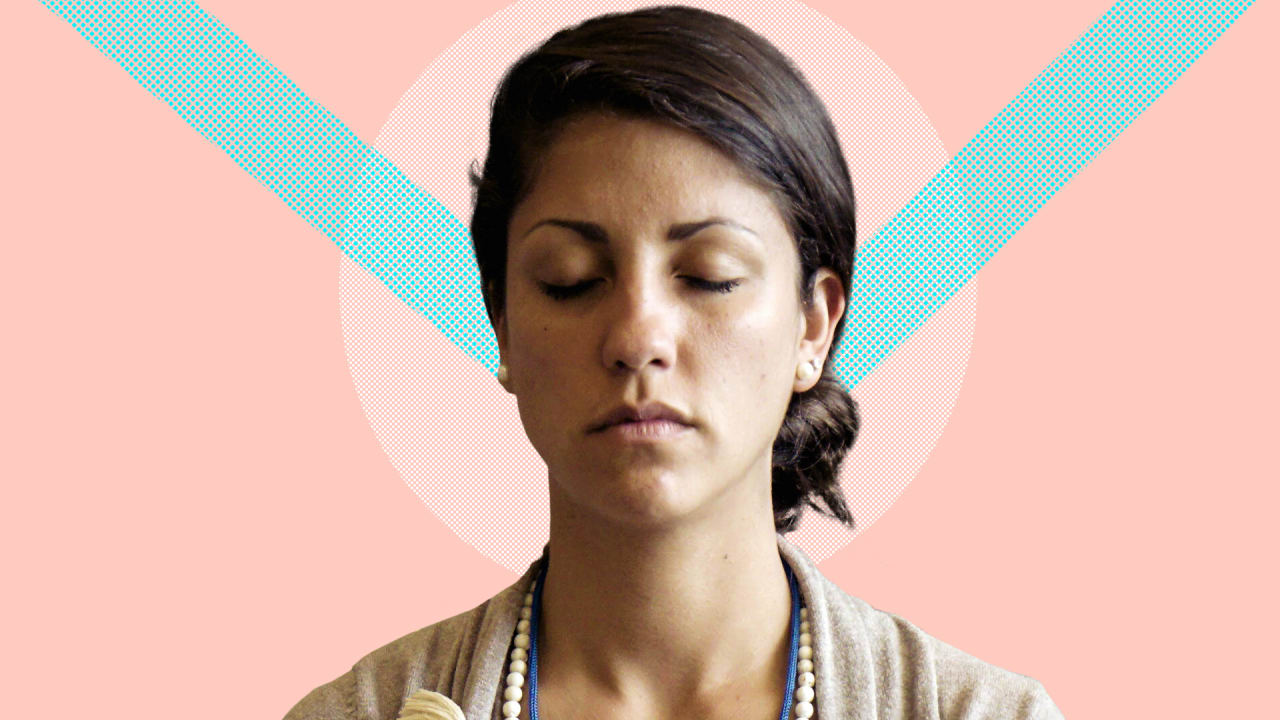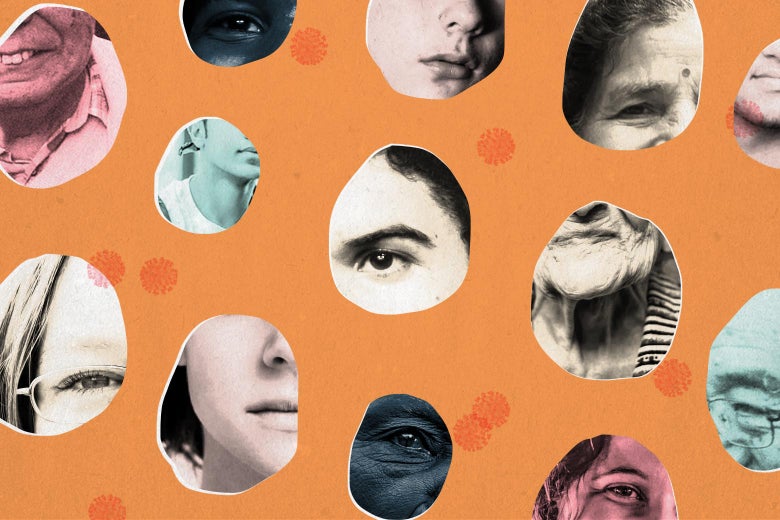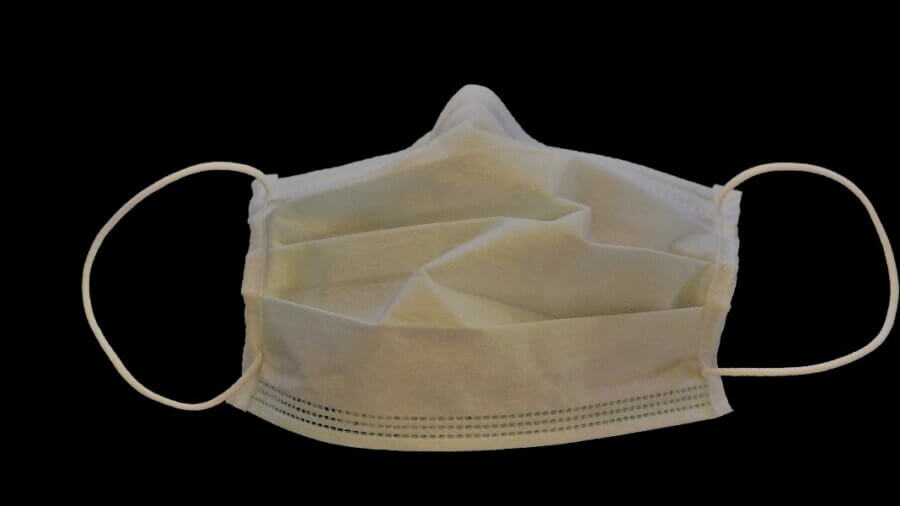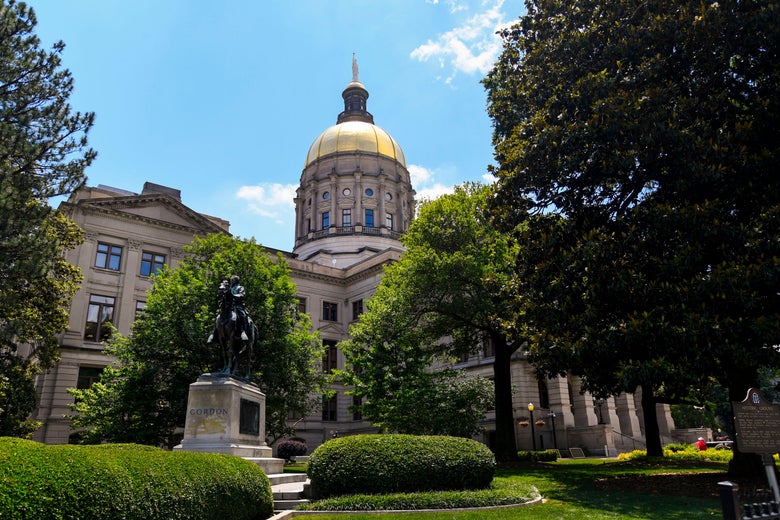Shared posts
Poker and the Psychology of Uncertainty
"My dad launched the quest to find alien intelligence. It changed astronomy."
[Drake] designed an experiment to search for signals coming from worlds that could be orbiting the nearby stars Epsilon Eridani and Tau Ceti. He named the experiment Project Ozma, after the princess in L. Frank Baum’s Oz series—an homage to an adventure tale populated by exotic and unearthly beings.
Before sunrise on April 8, 1960, Drake climbed an 85-foot radio telescope in Green Bank, West Virginia, jammed himself inside a trash-can-size piece of equipment, and launched humanity’s first scientific search for extraterrestrial intelligence—now known as SETI. For three months the telescope scanned its targets and found nothing more than cosmic static. The stars were stubbornly quiet.
“That was a disappointment,” Dad told me a few years ago. “We’d hoped that, in fact, there were radio-transmitting civilizations around almost every star.”
Even though Ozma failed to find evidence of extraterrestrial technologies, the project was uniquely transformative—the first step toward solving a monumental mystery.
“For me, Ozma is a platform that points out to the world that, when compared to something else that might potentially be out there, we’re all the same,” says the SETI Institute’s Jill Tarter, one of the leading astronomers in the field. “That cosmic perspective is just critical to solving the challenges that we’re looking at.”
"My dad launched the quest to find alien intelligence. It changed astronomy" by Nadia Drake (National Geographic)

Ozma Records' Pesco scrying with the wonderful and inspiring Frank Drake, father of SETI and technical director of the Voyager Record. pic.twitter.com/KkhXmTaehl
— Ozma Records (@OzmaRecords) March 30, 2017
The American Press Is Destroying Itself
Matt Taibbi in Substack:
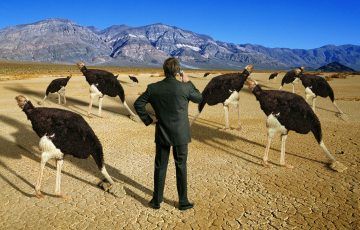 Sometimes it seems life can’t get any worse in this country. Already in terror of a pandemic, Americans have lately been bombarded with images of grotesque state-sponsored violence, from the murder of George Floyd to countless scenes of police clubbing and brutalizing protesters.
Sometimes it seems life can’t get any worse in this country. Already in terror of a pandemic, Americans have lately been bombarded with images of grotesque state-sponsored violence, from the murder of George Floyd to countless scenes of police clubbing and brutalizing protesters.
Our president, Donald Trump, is a clown who makes a great reality-show villain but is uniquely toolless as the leader of a superpower nation. Watching him try to think through two society-imperiling crises is like waiting for a gerbil to solve Fermat’s theorem. Calls to “dominate” marchers and ad-libbed speculations about Floyd’s “great day” looking down from heaven at Trump’s crisis management and new unemployment numbers (“only” 21 million out of work!) were pure gasoline at a tinderbox moment. The man seems determined to talk us into civil war.
But police violence, and Trump’s daily assaults on the presidential competence standard, are only part of the disaster. On the other side of the political aisle, among self-described liberals, we’re watching an intellectual revolution. It feels liberating to say after years of tiptoeing around the fact, but the American left has lost its mind. It’s become a cowardly mob of upper-class social media addicts, Twitter Robespierres who move from discipline to discipline torching reputations and jobs with breathtaking casualness.
More here.
Things We Saw Today: Protests Continue After Atlanta Police Murder Rayshard Brooks

On Friday, an Atlanta police officer shot and killed 27 year old Rayshard Brooks at a Wendy’s drive-thru. It will not surprise you to learn that Brooks was a Black man, and the officer was white. His murder is yet another in the countless police murders of Black people, and it happened in the midst of our country’s long overdue reckoning with racism and the power of the police.
The killing has had immediate repercussions in Atlanta. Police Chief Erika Shields has resigned, and Garrett Rolfe, the officer who killed Brooks, was fired the next day. A second officer involved, Devin Brosnan, was placed on desk duty. Atlanta Mayor Keisha Lance Bottoms spoke out about the death, saying, “While there may be debate as to whether this was an appropriate use of deadly force, I firmly believe that there is a distinction between what you can do and what you should do.”
Fulton County DA Paul Howard said, “(Brooks) did not seem to present any kind of threat to anyone, and so the fact that it would escalate to his death just seems unreasonable, … It just seems like this is not the kind of conversation and incident that should have led to someone’s death.”
The Wendy’s where the murder took place was set on fire. And protesters continue to take to the streets, fueled by anger and frustration. The DA and the Mayor have moved swiftly, but what will it take to stop the police? Why does global outrage and protest not stop white cops from killing Black people?
What will it take? Defund, demilitarize, and deescalate the police or abolish them? The world will continue to march in protest until something changes. Something HAS to change.
(via CNN, image: Tasos Katopodis/Getty Images)
- Kenneth Branagh discusses directing the new Disney+ film Artemis Fowl. (via /Film)
- Rupert Grint aka Ron Weasley chimes in to support trans people in the wake of J.K. Rowling’s comments. (via BBC)
- Happy Pride! Here’s a brief history of Harley Quinn and Poison Ivy’s relationship. (via CBR)
- This cat is an inspiration:
- Season 2 of The Witcher will focus on the family. And probably some witchering. (via io9)
- Chyler Leigh on how her Supergirl coming out story line helped her understand herself. (via Syfy Wire)
- No Time to Die‘s release date has been moved to November. (via Collider)
- Check out this street art in Hollywood for #AllBlackLivesMatter:
what in the world kind of pig cat eats like this pic.twitter.com/q1LojIN6bY
— Luke in Philadelphia (@tramL116) June 13, 2020
View this post on Instagram#AllBlackLivesMatter #LosAngeles #Hollywood #HollywoodBoulevard
A post shared by F U M I E (@zappyfunk) on
How’s your Sunday going, Mary Suevians?
Want more stories like this? Become a subscriber and support the site!
—The Mary Sue has a strict comment policy that forbids, but is not limited to, personal insults toward anyone, hate speech, and trolling.—
WHO Creates 'Confusion' About Asymptomatic Spread. Here's What We Know

That's the word some doctors used for a World Health Organization statement. At issue: 1) How many people are infected with COVID-19 but show no symptoms? and 2) Can asymptomatic people infect others?
(Image credit: Cristina Spano for NPR)
How Wikipedia Became a Battleground for Racial Justice
This fun, interactive graph shows how long every ‘Simpsons’ prediction took to come true
Here is every time the cartoon powerhouse has proven prescient in its 30+ year history.
What: A handy, interactive guide to every prediction from The Simpsons that proved accurate.
Houston's coronavirus recovery czar on how long this 'new normal' will last
 This story excerpt is courtesy of our partners at KHOU 11. Click here for KHOU's full story.
HOUSTON — As Houstonians get back to their hustle, there’s still a lot of uncertainty weighing on people’s minds.
“I think the most common question is around how long this will last?” said Marvin Odum, Houston's recovery czar and former president of Shell Oil. “The time frame we are talking about in terms of business recovery ranges from 6 months to 2 years."
Odum announced at a city press…
This story excerpt is courtesy of our partners at KHOU 11. Click here for KHOU's full story.
HOUSTON — As Houstonians get back to their hustle, there’s still a lot of uncertainty weighing on people’s minds.
“I think the most common question is around how long this will last?” said Marvin Odum, Houston's recovery czar and former president of Shell Oil. “The time frame we are talking about in terms of business recovery ranges from 6 months to 2 years."
Odum announced at a city press…
These online classes teach mental agility, optimism, and resilience—skills that we all need right now
80% of students who complete Coursera’s Positive Psychology specialization end up starting a new career.
Even before the events of past few months upended our collective sense of control over our personal and professional lives, the importance of adaptability and resilience has been well-documented. In January, LinkedIn used billions of data points from its members to see which soft skills matter most in 2020 and beyond. It determined that adaptability (the ability to “show up with a positive attitude . . . especially in stressful situations”) and emotional intelligence (the “ability to perceive, evaluate, and respond to your own emotions and the emotions of others”) are among the most significant.
On leaked call, Texas governor admits his reopen order will cost lives
BREAKING: As @GovAbbott reopens the state in the midst of a rising infection and death rate, leaked audio from a call with Texas Legislators reveals that he knows reopening puts more Texans at risk. #txlege pic.twitter.com/kTK4M8gpSY
— Progress Texas (@ProgressTX) May 5, 2020
On a leaked call with state lawmakers Texas governor Greg Abbott was heard saying he knows his decision to end the lockdown in his state will make the pandemic worse. "It's almost ipso facto," he told lawmakers, "the more that you have people out there the greater the possibility there is for transmission."
When it comes to abortion, Governor Greg Abbott says he's pro-life.
When it comes to actual people, not fetuses, he says he's willing to kill thousands.
— Max (@fatalmocking) May 5, 2020
Congratulations, Your Binder Has Earned Tenure
After careful review, we are happy to announce that your binder has been granted tenure. The reviewing committee was very impressed by its size and durability. It was truly one of the finest binders we have reviewed in recent memory. We are honored to add it to our “tenured” shelf. Unfortunately, you, the owner of the binder, have been terminated.
In their report, the tenure committee praised your binder’s dignified navy blue color and its soothing matte, non-stick finish. The committee made special mention of its ease of use, particularly the genius little lever that easily opens and closes the rings. Only the clumsiest of reviewers would ever pinch their finger (talking about you, Richard!). The additional pockets on the inside covers, although too thin to be practical, are still very stylish, and they give your binder a confident, self-assured swagger.
But what really sold the committee was what was inside — stunning, 24-lbs ivory linen paper. Such high-quality paper really gave your achievements a satisfying heft. Committee members even took the effort to remove the paper and feel for themselves its luxuriant texture. And the stylish plastic dividers with their printed labels made flipping through your record like a summer drive on a well-marked country road. Just beautiful.
Sadly, despite your binder’s great success, you, person, have not been tenured. As you are aware, tenure is an expensive proposition with little benefit to the university. Tenured faculty demand raises, they like to meddle in administrative affairs, and they take up a lot of space. Binders, on the other hand, are extremely cost-effective, mostly silent, and very space-efficient. We have calculated that your office alone could house close to two hundred three-inch binders. Such a massive savings of space will allow the expansion of our Entrepreneurial Innovation Disruption Hub and Café — a key part of our strategic plan and a real cash cow for the university.
You are probably asking how a university can run on binders? Well, it is surprisingly easy. First, binders are very portable, just one handcart can distribute hundreds of binders everywhere — classrooms, offices, and laboratories — in just a few hours. Binders also make assessment a cinch. Just a click, a few page flips, and presto! — we have all the numbers we need. No rubrics or complicated software, just a patient janitor and a scanner. Job done!
Alas, change is the only constant in higher education, and the university has started a program to digitize all binders and move toward an entirely electronic system. But don’t fear, the designers of our digital binder system have assured us that the interface will, in fact, still resemble a binder. You will even be able to customize the shape, color, and material of your digital binder in ways once unimaginable. The digital age is truly a wonder, no?
We are aware of the student complaints about binder-run classrooms, but the cost-savings on instruction were just too large to ignore. And we have taken measures to make the binders more welcoming to students. Rather than staring at blank ones sitting on tables, students will now have binders with photographs of real people on them (also, a gentle reminder to please send us a glossy 8 x 11 headshot). Further, our binders will help us to achieve a truly diverse faculty — a careful selection of white, black, yellow, and brown binders allows us to finally display the great diversity of our community.
But even binders have a shelf-life, and the university has contracted with a vendor that has promised a “retirement” that is sensitive to the community’s needs. Binders will be removed late in the evening and shredded discretely in the parking lot behind the student center. In some cases, at the Provost’s suggestion, a few high-achieving binders may qualify for emeritus status. Unfortunately, however, we cannot return photographs.
Even as we congratulate a new binder on earning tenure, we recognize that you, person, may be struggling with this decision. Your binder, after all, contains a written record of many of the great things you have done, all the papers you’ve published and classes you’ve taught. The university is deeply grateful for those achievements. Your binder could not have achieved its success without you. But be assured that your talents will live on, long since you have left our academic community. Take comfort in the fact that because you chose such a top-notch binder, future generations will be able to admire, and be inspired by, the truly exceptional paper and plastic representation of your achievements for decades to come.
Amazon VP Quits Over the Company’s Shameful Decision to Fire Protest Organizers & Whistleblowers

As the coronavirus pandemic continues to spread in the United States and people become even more dependent on delivery services, Amazon has managed to find new ways to treat its employees terribly—something it was already excelling at.
In recent weeks, multiple Amazon fulfillment centers across the country have seen outbreaks of COVID-19 and from a lack of hazard pay to substandard sanitization, workers say the company isn’t doing enough to protect them. Even worse, when employees protested, Amazon responded by firing organizers and whistleblowers and a leaked memo obtained by Vice shows higher-ups’ plans to smear and discredit at least one of them.
In an open letter posted to his website, Tim Bray, a now-former vice president at Amazon, writes, “At that point I snapped.” After lodging formal complaints and having the proper discussions, he knew that “remaining an Amazon VP would have meant, in effect, signing off on actions I despised. So I resigned.”
The victims weren’t abstract entities but real people; here are some of their names: Courtney Bowden, Gerald Bryson, Maren Costa, Emily Cunningham, Bashir Mohammed, and Chris Smalls.
I’m sure it’s a coincidence that every one of them is a person of color, a woman, or both. Right?
Since its original posting, Bray has deleted a “list of adjectives” describing the company’s treatment of those fired workers. He says that “voices I respect told me it was mean-spirited and I decided it didn’t add anything so I took it out.” (“Chickenshit” was one of those adjectives and I get Bray’s decision but also he wasn’t wrong.)
Bray also notes that the company’s actions during the coronavirus pandemic aren’t a divergence from its past behavior.
“Firing whistleblowers isn’t just a side-effect of macroeconomic forces, nor is it intrinsic to the function of free markets. It’s evidence of a vein of toxicity running through the company culture. I choose neither to serve nor drink that poison,” he writes.
At the end of the day, it’s all about power balances. The warehouse workers are weak and getting weaker, what with mass unemployment and (in the US) job-linked health insurance. So they’re gonna get treated like crap, because capitalism. Any plausible solution has to start with increasing their collective strength.
You can read Bray’s full letter here.
(via Vice, image: VALERIE MACON/AFP via Getty Images)
Want more stories like this? Become a subscriber and support the site!
—The Mary Sue has a strict comment policy that forbids, but is not limited to, personal insults toward anyone, hate speech, and trolling.—
Satisfy Your Wanderlust With Captivating Globes From the 17th and 18th Centuries

Some may think of globes as navigational tools, but really, they are closer to time capsules. From the earliest nomadic cultures to the so-called Age of Exploration, and beyond, the ways in which humans have visualized and abstracted our world are ever-changing — and globes throughout the ages have transitioned from useful information to extraordinary documents of bygone worldviews. Now, as real-world travel is curtailed, the British Library has released an interactive archive of their collection of globes, to satisfy history buffs and frustrated wanderlust.
The archive presents 3D models of 11 globes — a subset of the library’s historic maps collection — that can be rotated and zoomed into for greater detail at every angle. This includes a stunning 1602 celestial globe by Dutch cartographer Willem Janszoon Blaeu, first produced in 1602. In addition to representing the constellations as their fantastic and mythological namesakes, it identifies a nova in the constellation of Cygnus which Blaeu had personally observed in 1600. It’s one of several celestial globes in the collection — some of which pair with terrestrial counterparts — and all of which are fascinating examples of globes that do not represent terra firma or spaces with fixed positions at all, and indeed capture only a brief moment in the relationship of celestial bodies.
In additional to fantastic creatures, the globes showcase examples of cartographic visualization between 1602–1783, and include charming archaic conceptions of the oceans — the “Atalantick Ocean” in the 1730 Richard Cushee terrestrial globe, or the “Ethipoic Ocean” in the 1783 terrestrial globe by G. Wright and W. Bardin.
“The globes are particularly enigmatic objects with fascinating insights into the history of science and society,” said Tom Harper, Lead Curator of Antiquarian Maps at the British Library, in the press release. “Yet for all their ‘show’ they can be remarkably elusive objects which are difficult to properly look at, study and understand. For the first time, this innovative project makes a number of our most important globes available beyond the British Library’s reading rooms and exhibition galleries, to a wider audience and in a more imaginative way than ever before.”

For anyone wishing they could get out there and see the world, but responsibly homebound in accordance with public health concerns, this is a great opportunity from the British Library to take a fascinating piece of their collection for a spin!
Inventor makes device to escape from Zoom meetings
オンライン飲み会から緊急脱出できるマシーンを作りました pic.twitter.com/gB2Ur6f21i
— 藤原 麻里菜 | Marina Fujiwara (@togenkyoo) April 29, 2020
Marina Fujiwara created this useful little gadget to trick zoomers into thinking your Internet connection is buggy so you can leave a videochat whenever you feel like it.
What We Know About Whom COVID Kills
Don't Skip Your Child's Well Check: Delays In Vaccines Could Add Up To Big Problems

Telemedicine has its limits. And postponing shots could lead to a resurgence of diseases like measles. Doctors are taking steps to make their offices safe for kids who need to come in.
(Image credit: Karl Tapales/Getty Images)
Why all scientists must fight the "infodemic" of bullshit claims and quackery
There is some evidence that alternative treatments and placebo effects can relieve distress — a common justification for tolerating unproven alternative treatments. But it’s inappropriate to deceive people (even for their benefit) with magical thinking, and it is inappropriate for scientists to let such misinformation go unremarked.
Second, more researchers should become active participants in the public fight against misinformation. Those pushing unproven ideas use the language of real science — a phenomenon I call ‘scienceploitation’ — to legitimize their products. It is, alas, all too effective. Homeopathy and energy therapies, proponents argue, depend on quantum physics. Colonic hydrotherapy is justified using phrases borrowed from microbiome studies. And the language of stem-cell research is used to promote a spray claiming to have immune-boosting properties.
We need physicists, microbiologists, immunologists, gastroenterologists and all scientists from relevant disciplines to provide simple and shareable content explaining why this hijacking of real research is inaccurate and scientifically dishonest.
"Pseudoscience and COVID-19 — we’ve had enough already" (Nature)
Welcome to Your Sensory Revolution, Thanks to the Pandemic
The way we see, hear, taste, touch, and smell may never be the same again.
Courtesy of Covid-19, we are undergoing a sensory revolution. All of the senses have been affected by the coronavirus pandemic—not because the senses themselves have changed, but because the context and environment in which we sense has been profoundly altered.
Sensory historians like myself, who study the ways in which people in the past used their senses to understand and navigate their worlds, find that sensory shifts and perceptions tended to happen very slowly, measured in decades and centuries, not in mere weeks and months.
The shift that is happening now is unprecedented.
Sensory Hierarchy
The very idea that there are only five distinct senses took ages to mature, gaining credence in the Enlightenment. This period not only discounted erstwhile senses—such as the sense of “intuition”—but arranged the five senses into a distinctive hierarchy.
The Age of Reason empowered the eye as the sense of truth; seeing was believing, said most thinkers in the 1700s. Sight was followed by hearing, understood as more refined than the so-called lower or proximate senses. Those are smell, taste, and touch, senses that had once been held in high esteem in the ancient and medieval worlds, but which lost their currency and became more associated with the animal senses.
These changes took time. Seeing was believing by about 1800, but it had taken centuries for the original iteration of the phrase, “seeing is believing, but feeling’s the truth,” to lose its tactile component.
Sensing Changes
With the sensory hierarchy intact, the 19th century ushered in some profound and long-term changes in how people used and understood their senses.
Olfaction offers a good example. Western noses became more refined, more sensitive, and more alert to noxious smells. Rank and fetid smells gave way to a world that valued pleasant and deodorized smells. Washing and bathing became more popular, as did the use of perfumes and scents. Noses that could detect the difference were applauded. This olfactory evolution in smells and habits of smelling took about a century.
Now think of the sensory changes that have taken place in just a matter of months.
New Sights, Louder Sounds
Once-trusty eyes betray us in the face of an invisible enemy. Seeing is no longer believing. Those who appear perfectly healthy may be unknowing disease transmitters.
But if the cause of Covid-19 is invisible, its effects are emphatically not. Desolate city streets are new sights; the absence of airplane contrails strikes many as almost primordial; masks render once-familiar faces unrecognizable.
Soundscapes have changed, as have habits of listening. Coronavirus spreaders are sometimes described as “silent.” Many urban dwellers hear less traffic and formerly smothered sounds, such as birdsong, now can be heard.
The world is in some ways a much quieter place. Seismic sensors are picking up activity that used to be drowned out by the activity of cities. None of these sounds is new, but the effects of Covid-19 have reconfigured habits of listening and thresholds of hearing. Human voices are louder because there are no whispers at six feet.
The sense of smell has been hit hard. To breathe, after all, is to smell—if you can. Anosmia—the loss of the sense of smell—is an early sign of infection.
Even if we keep our sense of smell, we now pause before inhaling, lest we breathe in an enemy we cannot see.
Taste is no longer as easily sated, and palates are rearranged. Restaurants still cater, but in takeout fashion and with less variety. Hot food once served in the restaurant is colder and less palatable after it’s transported to the more distant dining room table. Clammy hamburgers on soggy buns served with limp french fries, anyone? Grocery stores now ration once taken-for-granted staples, notably eggs, milk, and meat.
Touch is the obvious sensory casualty in all of this. Centuries of handshaking habits have evaporated; high fives are gone. Outside of families, hugs, kisses, and nuzzles have all been lost with the fear of infection.
No Guide
In sensory terms, there has been nothing like this.
Even the violence done to the senses by wars, hurricanes, tornadoes, and earthquakes is modest in scale and scope compared to this sensory revolution.
Possible legacies, short-term or long, are hard to fathom. Beyond the deaths, the long-term effects of this pandemic will likely be in words and culture, not eternal lockdowns. Sensory and rhetorical turns of phrases will change. The results will not be even. Thanks to virtual communication, “See ya” and “I hear ya” should remain stable, but “staying in touch” and “getting a grip” could go the way of the sensory dinosaur.
But if normalcy eludes us?
A whole new world of sensory engagement will emerge, and it could be terrifying. Our soundscape could be civil strife, punctuated with the smell of tear gas and the resounding sting of rubber bullets on flesh.
There is no sensory past that can guide us here. It is a genuine revolution of the senses. And it stinks.
This article is republished from The Conversation under a Creative Commons license. Read the original article.
Supreme Court Says State Laws Aren’t Copyrightable
Oil Gains on Slower Production in Wake of Demand Drop
N.K. Jemisin Reminds Us of the First Rule of Fanfiction

No, the first rule of fanfiction is not “we don’t talk about fanfiction.” Many writers happily discuss reading and writing fic—as evidenced by N.K. Jemisin, the three-time Hugo Award-winning novelist, describing how she still writes and reads it herself. The first rule of fanfiction is “you do not try and get the original creator to read your fanfiction.” How quickly we forget our Internet history.
::rubs face:: Folks. Okay. Gather ’round. Let me ‘splain a thing.
I love fanfic on general principle! I still write and read it myself! But.
Stop sending me your fanfiction of my stuff.
— N. K. Jemisin (@nkjemisin) April 22, 2020
I have repeatedly pointed out that I cannot read fiction based on my own works. This is for your protection as well as mine! Ideas can’t be copyrighted but language can be, and adaptations of my stuff probably use some of mine. Stop sending me shit.
— N. K. Jemisin (@nkjemisin) April 22, 2020
That Jemisin needs to explain this essential “rule” demonstrates how much the landscape of fan-created works has changed. In many ways, it’s for the better. Twenty years ago, when I was a young writer just starting to dip my toes into the world of fic, misunderstanding of fanfiction online was rampant. Transformative work creators and archives were sometimes threatened with legal action by studios and authors, and a general culture of fear and “please don’t sue us” pervaded communities.
It was standard to include disclaimers on stories, attesting to the fact that you did not own the world and the characters, that no profit was being made, and even adding that overt plea not to be sued. These days, with a wider acceptance of transformative works—and many studios and authors even encouraging their production, understanding that a devoted fandom and fanworks can make for good PR—such disclaimers and fears have faded. And thanks to the work of pioneering transformative work advocates like those behind the Organization for Transformative Works, which powers Archive of Our Own, fans have more stable spaces and legal protection themselves.
As a result of our more mainstream embracing of fanfiction, however, it appears that many new fans have not gotten the memo that your favorite author or screenwriter cannot read your story set in their world. The instinct to want them to do so is understandable. I’ve been there myself many a time, especially when I was a teenager. You’re enamored of someone else’s world, and you want to show them just how much you adore and understand it. The problem is that legally, these creators are barred from reading your stuff. The burden of legal risk is now shifted their direction.
Not ideas, but phrases. Writers are mental packrats. We collect turns of phrase here, cool words there, and we don’t always remember where they came from, or even that they aren’t ours. So the best way to avoid lawsuits by fans — it’s happened — is to avoid reading fanfic.
— N. K. Jemisin (@nkjemisin) April 22, 2020
On Twitter, Jemisin’s excellent thread outlines this principle for fans—several of whom are sending fanworks inspired by her worlds directly to her. This isn’t the first time that Jemisin has made mention of the topic. But there are always newly-minted fans—or stubborn ones—who need to hear the message reiterated.
When it’s her own work being transformed, it doesn’t matter what form it takes. She still can’t take a look at it.
It doesn’t matter if you do it in the form of a screenplay, or a “free-form poem as part of a visual art exhibit,” or whatever. If I see it, I’m going to tell you not to do it. I am not going to give you my blessing. And if you *send it to my inbox,* I’m likely to see it. Stop.
— N. K. Jemisin (@nkjemisin) April 22, 2020
At any given time, my agents — including film agents — are actively shopping my works around to Hollywood and other adaptive media venues (comics publishers, audiobook publishers, etc.). You want to see my works adapted, right? Me, too! So stop sending me shit.
— N. K. Jemisin (@nkjemisin) April 22, 2020
In explaining how these things are, Jemisin is not discouraging fans from making their own fanworks centered around her creations. She just cannot be personally involved, and it’s a serious breach of fandom etiquette to ask.
I genuinely love your enthusiasm, folks. I’m flattered to know that a fandom exists for my work! But there’s a way this has to work. A social contract, so to speak. Your end of it is super-simple: DO. NOT. SEND. ME. YOUR. FANFIC. OF. MY. STUFF.
Third time this month alone. WTF.
— N. K. Jemisin (@nkjemisin) April 22, 2020
She also taps into a very current Mood of exhaustion from older members of fandom who find ourselves in an altered Internet sandbox than the ones we used to know.
Brought to you by the Old-School Fandom Cranky Grumble, “In My Day We Didn’t Send Fics To Authors Because Everybody Understood How This Works And We Didn’t Want To Put Them In An Awkward Position — Like Forcing Them to Say Something on Twitter.” And the letter F.
— N. K. Jemisin (@nkjemisin) April 22, 2020
Back in the nascent online fandom days, we couldn’t have conceived of social media and its ability to bring us into such close proximity with our favorite creators. You could not, say, put your fanart on Twitter and hope to see it retweeted by the directors of Avengers: Endgame. While some of this accessibility is great, I think it has also emboldened a generation of Internet denizens to the idea that these creators are available to them 24/7, and that they have the responsibility or inclination to engage with fanworks. As Jemisin lays out, even if the original creators were so inclined, legally they really cannot engage in this fashion. We need to stop putting them in such an awkward position and remember that social contract.
An element I adored about Jemisin’s thread is that she also takes the time to explain why she still creates and consumes fanworks in other fandoms herself. This may be one of the most illuminating ways I’ve seen to impart the joys of fic to those who may have never partaken.
There’s no particular stigma, or at least not anything worse than what genre writers deal with anyway. It’s just a fun thing to do. More social than pro writing, no pressure, more freedom to experiment, immediate vs delayed gratification.
— N. K. Jemisin (@nkjemisin) April 23, 2020
Fandom friends and enemies-to-lovers, let’s be glad that we live in a world where fanfiction is now almost universally embraced as a concept by creators, and wonderful projects like Archive of Our Own can win a Hugo. Please do not try and make the original creator read your work. Our sandboxes exist for a reason, even if they have changed shape over the years.
(via N.K. Jemisin on Twitter, image: Pexels/Twitter)
Want more stories like this? Become a subscriber and support the site!
—The Mary Sue has a strict comment policy that forbids, but is not limited to, personal insults toward anyone, hate speech, and trolling.—
First US Coronavirus Deaths Took Place Weeks Before Initially Thought
Read more of this story at Slashdot.
Shut in sounds: Gary Numan's basement sessions from 2014
Speaking of Gary Numan, I just discovered these basement session videos from 2014 on the YouTubes. I especially like this version of "Are Friends Electric?"
There only seems to be three performances available. I assume there are more.
Image: YouTube
Return to 2003 with two decades' worth of Homestar Runner songs, background music, and jingles
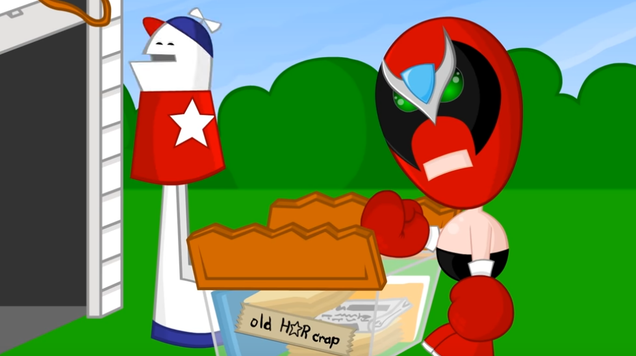
If, for no particular reason, you feel a strong urge to pretend for a couple of hours that it’s still the early ‘00s, there may be no quicker brain-rewiring tool than spending some time with the music of Homestar Runner. The web cartoon that gave us Trogdor, Teen Girl Squad, and Strong Bad, the gravely-voiced luchador…



